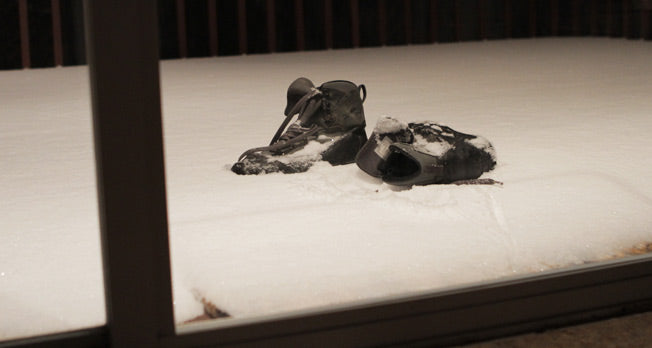We finally got some snow here in the new Tenkara USA home of Boulder, CO. And, with it, some very cold weather. The low tonight is expected to be a chilling 5°F! Salt Lake City, where I was tenkara fishing yesterday, is expecting a low of 18°F. Pittsburgh, PA, will see 32°F, as will Harrisonburg, VA.
This cold front has come right when I started reading about the International Didymo Conference. And, since I was travelling and fishing, I was also thinking about the spread of this nasty and invasive species. Didymo, if you’re not yet familiar with it, is a type of algae, also known as “rock snot”, which can spread very quickly and cover rocks on streams and have significant impact on the ecological balance of our favorite waters. It looks like “wet toilet paper” (though not usually white, unless it is getting dry). Its spread is most commonly blamed on our fishing equipment with the most common culprit being wading boots as there are many nooks where the algae can penetrate and then spread (though other equipment such as waders can also help spread it). Felt sole boots, in particular, are seen as the big scapegoat for the spread of didymo since they can remain moist for a long time and the pores can host the microscopic algae. But make no mistake, rubber-soled boots can also carry the stuff.
Part of the reason for the Conference, which will happen in March, is to figure out how to best stop the spread of the stuff. There are lots of advisories out there but not yet a silver bullet. The consensus for how we can all help is to clear our equipment thoroughly before going from one stream to another. But, ask 10 anglers the best way to clean the equipment and you may well get 10 different answers. I know this because I have asked at least 10 anglers how they clean their gear. Here is a good list of options.
The advise I paid particular attention to came from Ralph and Lisa Cutter, well-renowned anglers and creators of the highly acclaimed Bugs of the Underworld. The Cutters possess what I consider some of the most insightful knowledge of aquatic life, and when they gave me their answer I listened: “freeze it”, they told me.
As with anything, if it is not convenient to do, many of us will slack off and not do our part. It turns out, freezing is not only a highly-effective method of cleaning your gear off didymo but it is also a very convenient way of taking care of this mandatory chore.
In the warmer months I carry a large plastic trash bag with my fishing gear; at the end of a day of fishing I throw my boots in the plastic bag and as soon as I get home the bag goes straight into my freezer. Pretty easy as I do not have to deal with cleaning solutions and the risk of missing some of the didymo (though it helps if you have a mostly empty, or large freezer). Since hearing this advise I have religiously incorporated this chore into my coming home ritual: jacket on the floor, waders in the first empty space I see in the garage, rod on the couch, and wading boots straight into the freezer.
Now that I’m living in “cold country”, and the temperatures are in the freezing territory I decided I’d just throw boots right outside for the night and let nature take care of it for me. If you haven’t done this and were recently fishing, do us all a favor: put your boots out for the night, or if you’re not lucky to be in freezing territory right now (sarcasm here!), just throw it in the freezer for the night. That should be easy enough.
